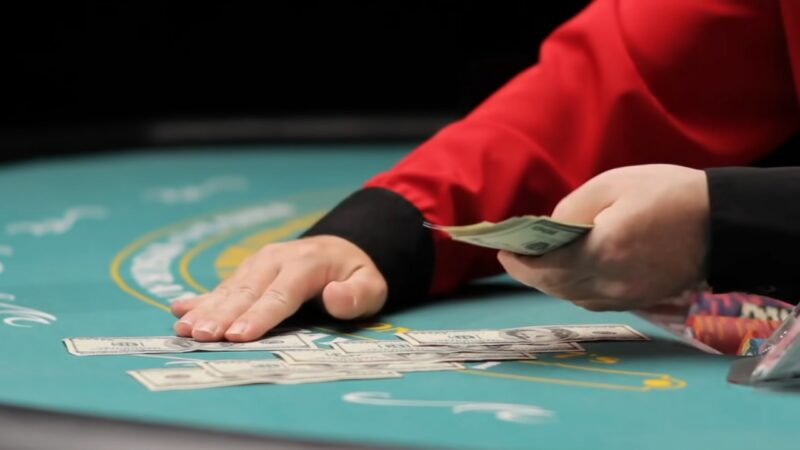Going all-in is as courageous as unstable, representing a moment wherein a participant wagers all their chips and lays their fortunes in front of opponents. It’s the epitome of excessive stakes, a choice that may catapult a participant to victory or spell instant defeat.
Recognizing the proper moment to go all-in calls for now not just a knowledge of the sport but additionally a deep instinct of one’s function on the desk. Knowing when to head all-in includes a complicated blend of strategic analysis and emotional intelligence, with obligation and self-attention performing as your compass. You can test your skills at online casinos, like Spy-Casino.
In the heat of the moment, it’s not simply approximately the cards in your hand but also about analyzing the room, comparing combatants, and thinking about the stakes. It’s essential to balance potential rewards with the very actual dangers of taking walks away with nothing.
Key Takeaways
- Recognize the strategic timing to go all-in by understanding your position and the game dynamics.
- Balance the potential rewards against the risks before making a bold move in any betting scenario.
- Responsible gambling requires self-awareness and the ability to assess one’s actions critically.
The Concept of Going All-In

Going all-in is a pivotal moment that can both propel you to victory or result in leaving the table quickly. This tactic involves committing all of your chips to the modern-day hand, representing a critical second of high danger and the ability to excessive praise.
Defining All-In in Gambling Context
When you decide to go all-in, you’re putting every chip you have at stake on one outcome, making it the ultimate bet. Your effective stack—the number of chips you have available to bet—becomes zero as you push everything into the pot. A correct all-in decision can maximize the value you get from your hand if the odds are in your favor.
Different Scenarios for Going All-In
There are several scenarios where going all-in might be strategically advantageous:
- If your chip stack is significantly decreased than the common stack at the table, going all-in can be a way to save you from being blinded out (dropping all your chips through required small and large blind bets).
- When you’ve got a sturdy hand and want to keep away from hard selections on future making bet rounds, pushing all your chips in can every so often be the best move.
- A well-timed all-in as a bluff can cause your opponents to fold better hands, provided you’ve established a table image that supports this bold move.
Strategies for Going All-In

Making the decision to go all-in can be pivotal, demanding a deep understanding of your position, stack size, and the nuances of bluffing. Mastery of these elements along with adept timing can optimally leverage fold equity and psychological pressure to your advantage.
Evaluating Position and Stack Size
Your position at the desk profoundly affects your choice to head all in. In the overdue role, you have the gain of watching the movements of your opponents before you make your move. Be greater willing to go all-in whilst you’re in an overdue position because the information you collect can substantially grow your possibilities of success.
Compare your stack size to that of your opponents and the blinds. If your stack is short and the blinds are increasing, it may be time to make a bold move. Conversely, if you have a comfortable stack, you can afford to wait for a more opportune moment.
The Role of Bluffing and Fold Equity
Bluffing: Effective bluffing can make going all-in a powerful strategy even with weaker hands. Bluff against opponents who display tightness and are more likely to fold.
Understanding fold equity is critical. It is the likelihood of your opponents folding in response to your all-in move. Higher fold equity increases the appeal of an all-in bluff, especially against cautious or predictable players.
Timing and Psychological Aspects
Opt for an all-in move when you sense weakness in your opponents or when they’re less likely to call. Strike after an opponent has suffered a big loss or when the table dynamic shifts in your favor due to a recent elimination.
Use all-in as a tool to apply psychological pressure on aggressive players or those trying to outmaneuver you with frequent betting. The finality of an all-in can compel even the most assertive poker players to second-guess their strategy.
Assessing Risks and Rewards

Before you decide when to go all-in, it’s crucial to understand how to calculate the odds of a profitable outcome and how tournament and cash game strategies differ in terms of all-in decisions.
Calculating Pot Odds and Equity
To decide whether going all-in is a great guess, you want to calculate pot odds and fairness. Pot odds are the ratio of the contemporary size of the pot to the scale of the wager you should call.
If the pot odds are favorable as compared on your danger of triumphing (your equity), then going all-in may be a cost flow. Equity refers in your share of the pot, given your contemporary hand and the range of palms your opponent may have.
All-In Decision-Making in Tournaments Vs. Cash Games

The context of tournaments versus cash games significantly affects all-in decisions. In a cash game, the goal is to make the best decision based on maximizing value and chips won. There are no impending blinds increases to force action, allowing for a more balanced approach between risk and reward.
In contrast, tournaments introduce additional considerations like surviving until the next payout increase or leveraging chip stack size to apply pressure. For instance, a big stack in a tournament might go all-in to bluff a smaller stack out of a hand because the risk of losing chips doesn’t outweigh the reward of staying in the game and increasing in the money finish.
Tournament Considerations
- Survival and payout structures
- Stack sizes and relative pressure
- Timing and blinds structure
- Cash Game Considerations:
- Immediate pot value
- Long-term chip accumulation
- Psychological dynamics and table image
When faced with side pots, particularly in tournaments, be mindful that going all-in can have implications not just for the main pot but also for any potential side pots. This complexity adds another layer to your risk assessment as each pot you’re eligible for has its equity profile that must be evaluated separately.
FAQs
What Is the 50 Rule in Poker?
The “50 rule” in poker, despite the fact that no longer a popular rule, might also talk to a guiding principle suggesting that in case you are starting a hand with 50% or greater of your stack committed to the pot, you must be organized to go all-in.
What Is the 10 20 30 Rule in Poker?

The “10 20 30 rule” is not an established rule in poker gameplay or strategy. However, it could be a misinterpretation of other known strategies. Be sure to verify its authenticity before applying it to your gameplay.
What Is the 7 2 Rule in Poker?
The “7 2 rule” in poker informally refers to the hand 7-2 offsuit being the worst starting hand in Texas Hold’em. Some players use this rule to bluff, convincing others they have a strong hand when holding a 7-2.
Is Poker a 100% Skill?
Poker isn’t a game based totally 100% on skill. While skill plays a sizable position in long-term period fulfillment, factors of hazard additionally affect the final results of person palms and periods. The stability between ability and good fortune is what makes poker both tough and unpredictable.
The Bottom Line
When thinking about the selection to move all in while playing, it’s critical to evaluate the situation cautiously. Your intuition, mixed with strategic thoughts, can guide you, however, the detail of risk constantly plays a position in the final results.
Use your expertise, revel in, and consciousness of the sport to determine the pleasant moment to go all-in, however, always be prepared for any result.

